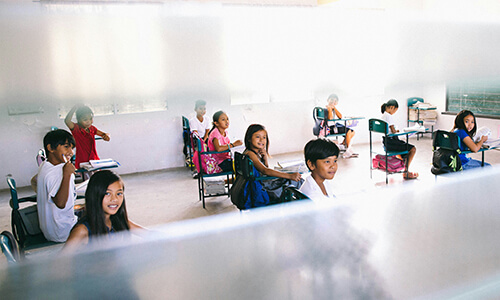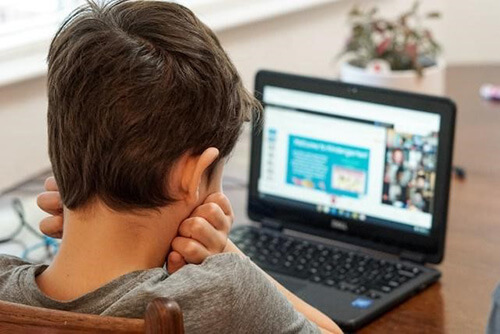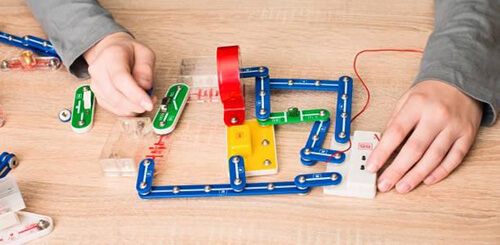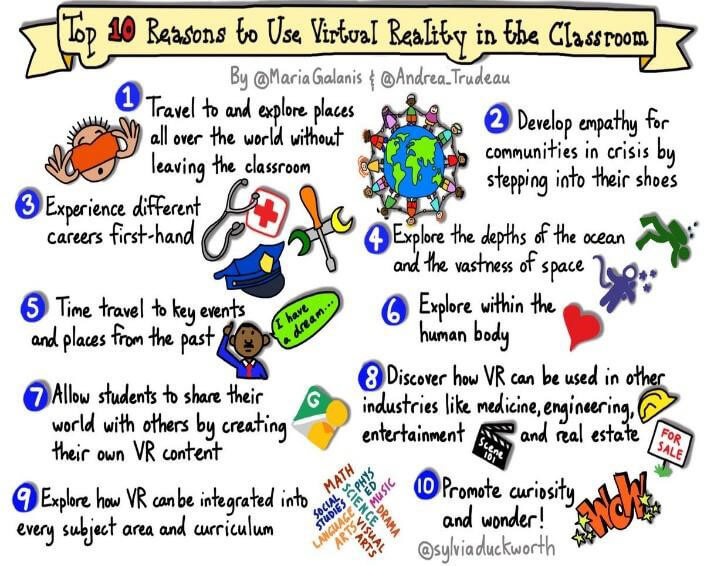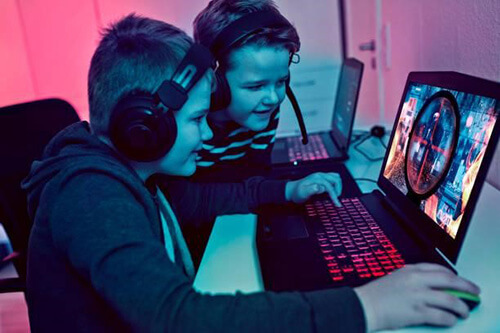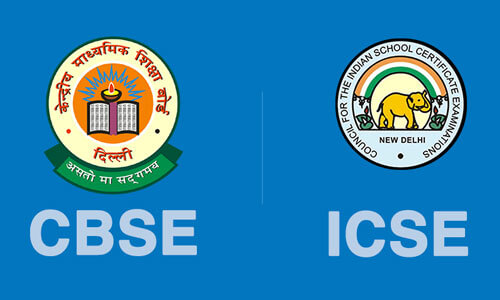India has been the land of gurukuls – which was a system aimed at imparting knowledge that was holistic in approach, through personalized mentoring and interaction. Also, it had all the features that most of today’s parents are seeking in regular schools; features such as:
 Residential: Students lived with or near their teacher, or guru, in a forest or rural setting away from the bustle of modern cities and other distractions (well not all parents today want residential schooling, but it has its advantages in building confident, independent individuals who learn to think for a community)
Residential: Students lived with or near their teacher, or guru, in a forest or rural setting away from the bustle of modern cities and other distractions (well not all parents today want residential schooling, but it has its advantages in building confident, independent individuals who learn to think for a community)- Personalized: The guru tailored teaching to each student’s needs and abilities
- Oral tradition: The guru taught through lectures, discussions, storytelling, and recitations (today we have multi-media resources that tap all the senses)
- Community living: Students lived together as a family, sharing meals, chores, and activities
 Emphasis on values: The system emphasized moral values, ethical conduct, and community principles
Emphasis on values: The system emphasized moral values, ethical conduct, and community principles - Practical skills: Students performed daily chores to develop practical & life-skills for survival
- Holistic development: The system taught a wide range of subjects, including academics, extracurriculars, yoga, meditation, and mantra chanting
- Environmentally & societally connected: The learning happened hands-on, in nature, within the local culture with dance, music, artforms – which lent a deep sense of accountability, responsibility and care for the family, mother earth & culture.
- Close student-teacher relationship: The guru played a multifaceted role as a mentor, parent, guide, and spiritual authority
However, the face of education has undergone tremendous changes since the gurukul times, then post-independence and more so, in the recent times. Under the prevailing Indian schooling structure today, we often find one major choice: government schools versus private schools. While the former offer only the bare minimal infrastructure but a rigidly controlled hard-core academic programme & testing; the latter put forth a wider selection of co-curricular activities, superior infrastructure, varied learning platforms, resources and an ‘elite’ feel on their platter – mostly, at steep prices, making such ‘enjoyable’ learning restricted to the well-off!
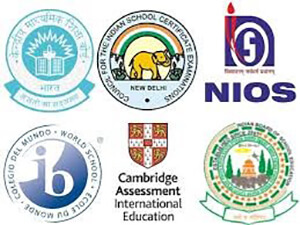
Add to that the plethora of education Boards available in India, each with the milestone performance indicators of academic competency at the 10th & 12th grade levels. These boards operate at the Central, State & International levels. To know more about the Boards of Education in India – do read our January 2025 Newsletter QEDpress Vol. 3, Issue 08 – “On Board with Boards of Education”: https://www.qedrak.com/wp-content/uploads/2025/01/January-2025-QEDpress-Vol-3-Issue-08.pdf
Resurgence of the Gurukul Magic

The idea of alternative schooling germinates from the thought that the mainstream education really does not fully satisfy the needs, goals and unique interests / talents / gifts of students, nor the belief & outlook of what ‘meaningful education’ constitutes, for their families.
Around the world, educators including Rousseau, Swiss humanitarian Pestalozzi; the American transcendentalists Alcott, Emerson, and Thoreau; founders of progressive education Dewey and Parker, and educational pioneers such as Fröbel, Montessori and Steiner – all believed that education should cultivate the developing child on many levels: not only intellectually, but also morally ‘n spiritually, emotionally ‘n psychologically and physically. In addition, it should cater to the pace, choice and interest of the learner, integrating learning across all domains as a holistic view of life around, just the way their development needs to be holistic.
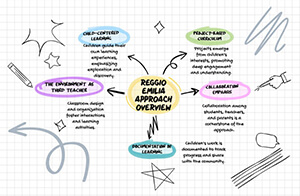
In the 1950s, an alternative Reggio Emilia approach to early-childhood education was introduced in Italy by Malaguzzi – an internationally acclaimed approach that believes in a student-centred and constructivist self-guided curriculum that uses self-directed, experiential learning in relationship-driven environments. It is based on the principles of respect, responsibility & community through exploration, discovery & play. (https://www.earlyyears.tv/loris-malaguzzi-reggio-emilia/
What the term means
Before we get to the ‘WHY’ for alternative schooling – let us first understand the meaning of the term. Alternative schools are also known as – experimental schools, progressive schools, lab schools, non-traditional schools, unconventional schools, special schools (since the alternative schools are where kids with special needs are catered to), unschooling schools, home-schools, etc.
Essentially, an Alternative Schooling system provides an educational program that isn’t available in a traditional school program. The concept grew in response to the establishment of standardized and compulsory education (with fixed grade-wise syllabi), which are blind to the individual capacities & interests of the learners under their programme. A programme in which the one-size-fits-all lesson is what everyone learns, and it is highly teacher & marks-centred.
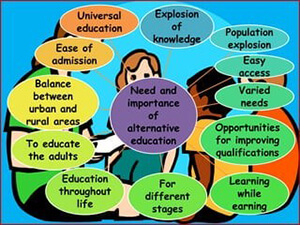
This blog attempts to explore various facets of this OTHER option for parents – Alternative Schooling, and how it reintegrates back to the formal education pathways for higher education.
Alternative Schooling
The reasons for Parents to even think about / seek Alternative Schooling options for their children are many & varied:
- Distance of ‘preferred suitable’ schools from home
- Prohibitive pricing of private school education, when preferred over the affordable but poor quality of education in government run schools
- Ease of admission at the point of entry (no academic screening)
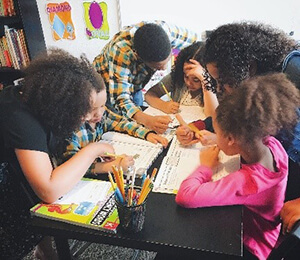 Due to the pandemic, the adaptation of learning styles to learning from home (and in familiar spaces with familiar adults, in small groups) – opened doors to alternative, personalised learning programmes, with individual pacing in differently aged cohorts, that never heard a time-regulated bell!
Due to the pandemic, the adaptation of learning styles to learning from home (and in familiar spaces with familiar adults, in small groups) – opened doors to alternative, personalised learning programmes, with individual pacing in differently aged cohorts, that never heard a time-regulated bell!- The prevalent education system’s inadequacies (one-size fits all & teacher centric approach), including the emphasis on rushing the pre-decided curriculum, rote memorization and adherence to one-time, judgemental tests+marks-based performance indicators, have proven detrimental to children’s creativity, overall growth, as well as mental health.
To know more on this (with statistical data & parent testimonials), please feel free to read : https://www.educationnext.in/posts/what-you-must-know-of-the-alternate-education
Components of Alternative Education (AE)
- Personalised Learning:
AE understands that those enrolled are diverse in their abilities, challenges, and preferences. This learning method often includes differentiated instruction, student activities, homework, and projects based on different students’ needs. It helps them to learn at their own pace and explore what they are interested in. - Flexible Curriculum:
Whereas conventional programs in learning institutions have a set repertoire that cannot be altered on the other hand AE comes with flexibility in course content and structure. For instance, they will have a chance to consider subjects that are typically not taken in traditional education or pursue specific fields of passion more effectively.  Experiential Learning:
Experiential Learning:
Usually, the students in AE are required to take part in various forms of practical experiences. Internship, apprenticeship, or project-based learning engages students in a given project and gives them a chance to learn beyond the classroom confines of a classroom.- Holistic Development:
AE focuses on the child as a whole person, and thus along with academic success they also focus on fostering the social, emotional, and physical aspects of the child at the same time. These practices include mindfulness practices, art, and structured physical activity to incorporate a healthy functioning of the body.
Goals of Alternative Education
- Empowerment:
While one can list several objectives of AE, one of the most central and foundational ones is learner autonomy, i.e., giving responsibility to the student in their learning journey. Promoting autonomy, intelligence, and reflection assists a person in gaining the skills and confidence required for a life outside of education. - Inclusivity:
AE aims at offering learning opportunities and education to all children and creating an inclusive environment so that everyone feels valued and supported. AE embraces different learning styles & differently abled learners (with physical / neurotypical special needs), so that it can bridge the gap in accessibility and make sure that all students regardless of what background or abilities they come with, will get the same opportunity. - Lifelong Learning:
Not just academic achievements, students of AE develop a passion for learning that is not constrained by formal education standards and sanctions. Promoting curiosity, innovation, and a growth mindset prepares them to be learners for life as they develop a passion for acquiring knowledge beyond the classroom and it prepares them to face the harsh reality of the job market.  Social Responsibility:
Social Responsibility:
Teaching strategies promote awareness of present society and foster responsibility and active engagement in their communities. Including classroom service-learning projects and ethical discussions, serves to instil values of responsible citizenship and the desire in the students to contribute to society positively.- Personal Fulfilment:
Finally, the last goal of AE is to facilitate personal purpose and fulfilment. Respecting the individual human interests, abilities, and goals, allows the students to follow the great journey based on their sense and purpose.
Benefits of Alternate Education
Alternate education offers concrete benefits of personalization and creative growth.
- Customised Learning
The biggest positive of AE systems is that they value the individuality and creativity of each child. The lesson plans and schedules are kept flexible and taught at a pace that aligns with the child’s comfort. Children are not assessed on complex examinations; instead, the focus is on their personal development and growth. - Modern curriculum with experiential learning
The curriculum in AE is a mix of traditional learning and modern online school curriculum. Moreover, the students learn by doing, so creative skills and experiential learning are at the core of the curriculum. This enables students to discover their talents and interests and pursue them further. 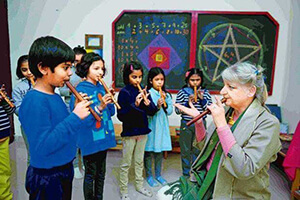 Small Class Sizes
Small Class Sizes
A low student-teacher ratio means that students get personalised attention from their teachers, mentors, and instructors. This creates a safe learning environment where students are not afraid of learning by making mistakes and, as a result, they flourish. This also helps foster community among the students, teachers, and parents (some of them are the teachers themselves).- Emotional Intelligence and Soft skills
Due to the nature of instruction, AE can hone the child’s soft skills and emotional intelligence. They grow up to become free-thinking, adaptable, and empathetic human beings who can communicate effectively.
FAQs on Legal / Official aspects
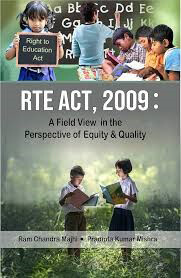 Is Alternative Schooling legally recognised in India?
Is Alternative Schooling legally recognised in India?
Yes, alternative schooling is legally recognized in India; the Right to Education Act, 2009 does not prohibit alternative schooling (incl. homeschooling), making it a valid educational option within the country. Having said that, parents should ensure their child receives an equivalent education and may need to arrange for assessments to demonstrate their progress.- Who is Alternative Schooling meant for?
Alternative schooling is ideal for students who…:- struggle in traditional settings due to learning disabilities or attention issues.
- need advanced curriculum and accelerated learning opportunities due to giftedness.
- prefer to take ownership of their learning and set their own goals, being autonomous in mindset.
- want to deeply explore a particular subject area due to their specific interest.
- are tagged for behavioural issues or for at-risk students who are not doing well in a school environment.
- Do Children have to get back into mainstream schooling at some point?
In India, alternative schooling students typically take exams offered by the National Institute of Open Schooling (NIOS) or the International General Certificate of Secondary Education (IGCSE) to gain formal qualifications, as these options allow flexibility for non-traditional learning methods and can be taken as a private candidate. Depending on the specific alternative school curriculum, they might also sit for certain CBSE or CISCE board exams as a private candidate.Some parents who think their children would be better-off graduating out of a ‘traditional’ school, prefer to integrate their wards back into mainstream schooling by Grades 8/9, for the last 4 years – since they believe that –
(a) the advantages of Alternative Schooling are already set & in place w.r.t. – enhanced cognitive & life skills, wider knowledge base, experiential learning and growth-mindset, and
(b) in their belief, they would be better able to get admission into Higher Education if they exited schooling from traditional structured schools (which some home-schooling parents feel is a myth!) - Do students from Alternative Schooling face any deficits, losses in not being in traditional structured schools?
Testimonial 1 – Chetana Keni: “Alternate Schools in my view (at least the ones that are in existence at least for 8 to 10 years and have churned out 3 to 4 batches of grade 10 or 12 and focus on Skilling), are definitely not mainstream but will ensure the children can fit into the mainstream world. I can tell from my experience of homeschooling a child who is 20 now, consulting many homeschooling parents and running an alternate school myself from 2011 that the children who pass out of a system like this have been clear headed, empathetic, skilled and chosen careers that can make an impact. And these careers include those that needed entrance exams which they cleared just like anyone else. In no way did I see that Alternate education hindered entry to mainstream education or life.”Testimonial 2 – Ryan Chadha (Co-founder – The Shishya Jigyasa Academy): “While I can’t speak for all alternative schools, a good alternative school focuses on giving children a reasonable amount of freedom to explore their curiosity and interests. The methods of teaching are often quite different – very few alternative schools will employ the ‘chalk and talk’ method of teaching exclusively.
“While I can’t speak for all alternative schools, a good alternative school focuses on giving children a reasonable amount of freedom to explore their curiosity and interests. The methods of teaching are often quite different – very few alternative schools will employ the ‘chalk and talk’ method of teaching exclusively.
- whether or not a child has learned / understood a set of concepts
- where a child ranks in his / her class / year group on a certain set of metrics
With respect to 1 above, there are plenty of ways to test a child’s understanding. Board exams and competitive exams have traditionally been the only way, but luckily, many employers are now realising that their best employees either did not do well in board exams, and in some cases, did not even sit for these exams in the first place. Some employers don’t even require a college degree now. The truth is that boards and competitive exams ensure that one knows a very finite amount of the knowledge and skills required to succeed in the world today. So, dedicating all the time a child spends at school to learn a very small part of what will help him / her succeed is tantamount to folly.
With respect to 2, benchmarking oneself against your peers is useful, but the way it is done in India, it doesn’t really tell you the one thing that will help you become a successful person – what your strengths & weaknesses are.
A good alternative school, however, chooses to define it, focuses not only on academics, but also on the skills required to succeed in the world today. A balanced approach involving academics, life skills and values ensures that a child has a well-rounded view of life and a plethora of experiences to fall back on by the time they enter college. As such, going to a particular kind of school will not hinder a child’s ability to do well on exams. While I cant state statistics due to studies, in the real world, I don’t think you will find much difference in the board exam results of alternative schools versus mainstream schools. What you will find though is that on average, children at alternative schools tend to enjoy the experience of school and are naturally predisposed to taking on various types of challenges since the purpose of school is not constrained to only achieving marks in tests and exams. And the world needs more people who can rise to any challenge!”
Conclusion
We live in an era wherein our children require a more advanced, relevant, meaningful and refined form of education, and it’s our responsibility to provide it to them. Alternative Education systems can certainly help children forge their paths by equipping them with all-important soft and hard skills. They make for a healthy learning environment, making them an increasingly preferred choice over expensive private school education.
When choosing an alternate school, consider visiting the schools, speaking with teachers and parents, and assessing how well their philosophy aligns with your child’s learning style and your educational goals. Also, make sure you choose the right alternate schools that have required legal credentials to run a school.
There are many schools in India that operate under the banner of AE – to name a few:
- Rishi Valley School | Chittoor, Andhra Pradesh
- Ukti | Noida
- Chinmaya Mission | pan-India
- Isha Home School, Coimbatore
- Levelfield school, West Bengal
- Veena Vadini school, Madhya Pradesh
- The Yellow Train School, Coimbatore
- The School KFI, Chennai
- SECMOL, Ladakh
- Aurinko Academy, Bengaluru
- Tridha, Mumbai
- Pallikoodam, Kottayam
- India, Mumbai
- Abhaya, Hyderabad
- Be Me, Bengaluru
- Isai Ambalam School, Auroville
- Aarambh, Vasant Kunj
- Sarang Alternative School, Kerala
- Prakriya Green Wisdom School, Bengaluru
- Kalpavruksha, Mumbai
Extra Resources:
Video: https://www.youtube.com/watch?v=21XrPBJ71uc
Book: https://www.amazon.in/Alternative-Schooling-India-Sarojini-Vittachi/dp/076193619X


